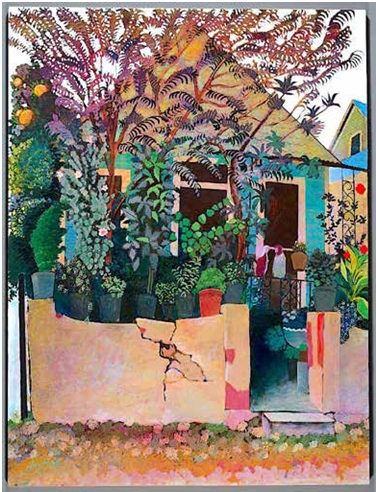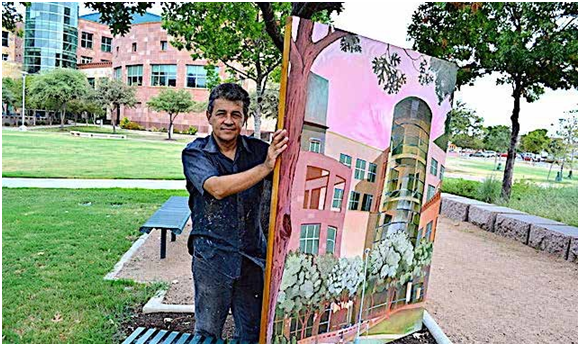By Dr. Ricardo Romo
Jacinto Guevara moved to San Antonio in the early 1990s from his hometown of La Puente, California. He is a product of East LA schools and now lives in East SA. He grew up drawing on scrap pieces of paper and with the encouragement of his par- ents, taught himself to draw and paint. He writes: “The best of the early drawings were simple ‘studies’ of the world around me plus many fantasies. There were never considered to be a product of ‘Art’. I didn’t consider mak- ing ‘Art’ until 1974.”

Guevara came of age dur- ing the rise of Chicano art in California. Much of the new Chicano artistic expres- sion could be found in the murals of East Los Angeles which were painted in the 1970s. He acknowledges that he became “obsessed with the Xicano (Chicano) illustrative motif which in- cluded indigenous design and history, vato loco/street iconography and the great Mexican muralists.”
I lived in Los Angeles in the early 1970s and taught at California State University- Northridge where Guevara enrolled in the early 1970s. I taught Chicano history for the Chicano Studies Department but never had the opportunity to meet Gue- vara. Chicano Studies stu- dents took pride in being politically active and sev- eral worked in publishing El Popo, a campus newspaper that Guevara contributed to on occasion.
In his twenties, Guevara painted but preferred music over art. For over a decade he played the accordion for several Los Angeles bands. In the mid 1970s, he met several East Los Angeles muralists and decided to engage in art full time. East Los Angeles was home to many Chicano artists, most of whom regrettably were ignored by the galleries and museums. Lacking access to the art markets, Guevara decided to move to San An- tonio where housing was less expensive and opportunities for exhibitions and shows were more ample.
In his Eastside home on Olive Street, Guevara stays busy painting and construct- ing his own wood panels for his oil paintings. His paintings are in the UTSA collection as well as in the offices of numerous local professionals. Our recent donation of Chicano art to St. Philips’ College includes several of Guevara’s paint- ings. His work can be seen in an exhibit planned for the start of the fall semester in September at St. Philips College.









